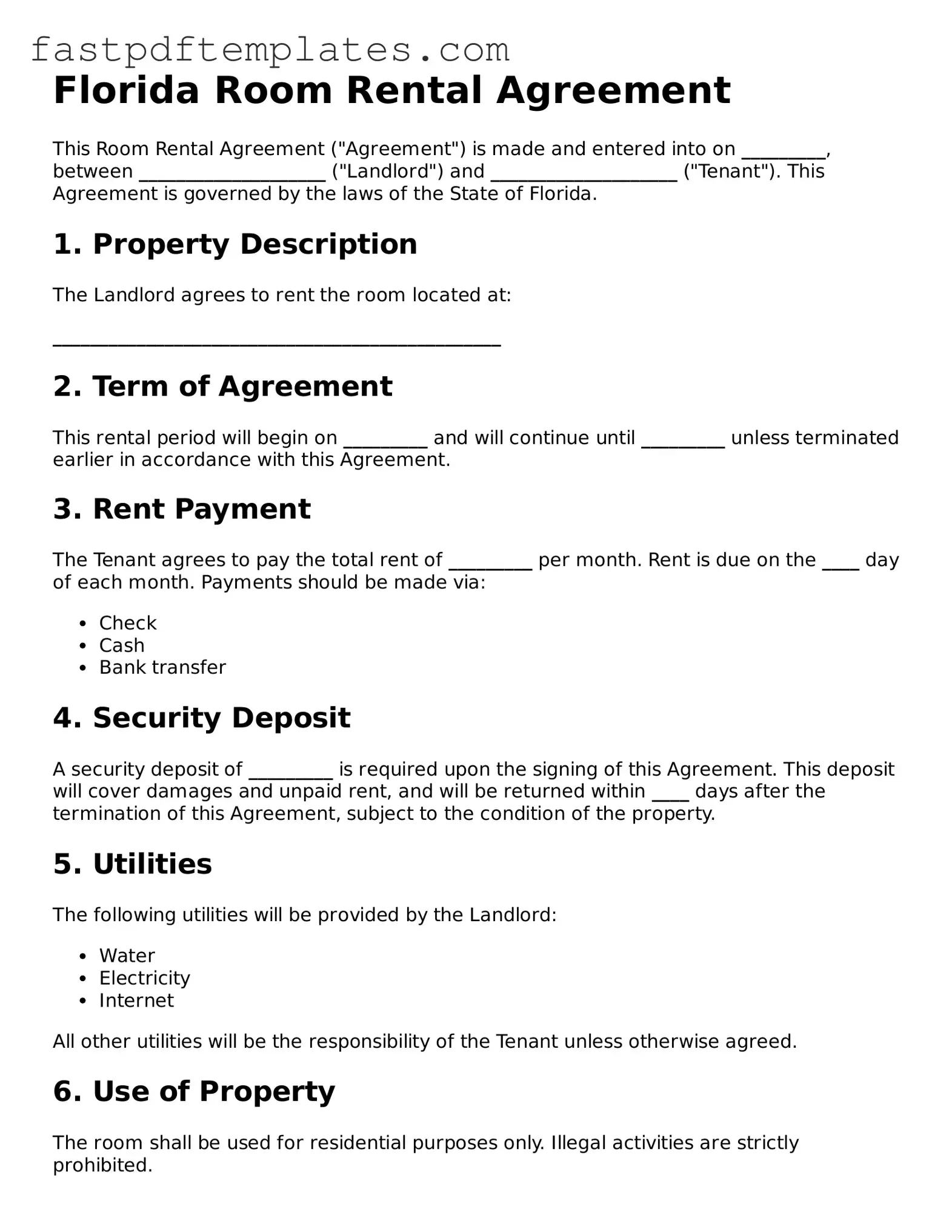Florida Room Rental Agreement
This Room Rental Agreement ("Agreement") is made and entered into on _________, between ____________________ ("Landlord") and ____________________ ("Tenant"). This Agreement is governed by the laws of the State of Florida.
1. Property Description
The Landlord agrees to rent the room located at:
________________________________________________
2. Term of Agreement
This rental period will begin on _________ and will continue until _________ unless terminated earlier in accordance with this Agreement.
3. Rent Payment
The Tenant agrees to pay the total rent of _________ per month. Rent is due on the ____ day of each month. Payments should be made via:
4. Security Deposit
A security deposit of _________ is required upon the signing of this Agreement. This deposit will cover damages and unpaid rent, and will be returned within ____ days after the termination of this Agreement, subject to the condition of the property.
5. Utilities
The following utilities will be provided by the Landlord:
- Water
- Electricity
- Internet
All other utilities will be the responsibility of the Tenant unless otherwise agreed.
6. Use of Property
The room shall be used for residential purposes only. Illegal activities are strictly prohibited.
7. Termination
Either party may terminate this Agreement with ____ days written notice. The notice should be delivered to the other party as follows:
- By hand delivery
- By certified mail
- By email (with read receipt confirmation)
8. Maintenance and Repairs
The Landlord is responsible for maintaining the structure and related amenities, while the Tenant is responsible for keeping the room clean and in good condition. The Tenant must report any needed repairs to the Landlord within ____ days.
9. Governing Law
This Agreement will be governed by the laws of the State of Florida. Any disputes arising from this Agreement will be referred to the appropriate court in ____________________ County.
10. Signature
By signing below, both parties agree to the terms outlined in this Rental Agreement.
Landlord Signature: ________________________ Date: ____________
Tenant Signature: __________________________ Date: ____________
